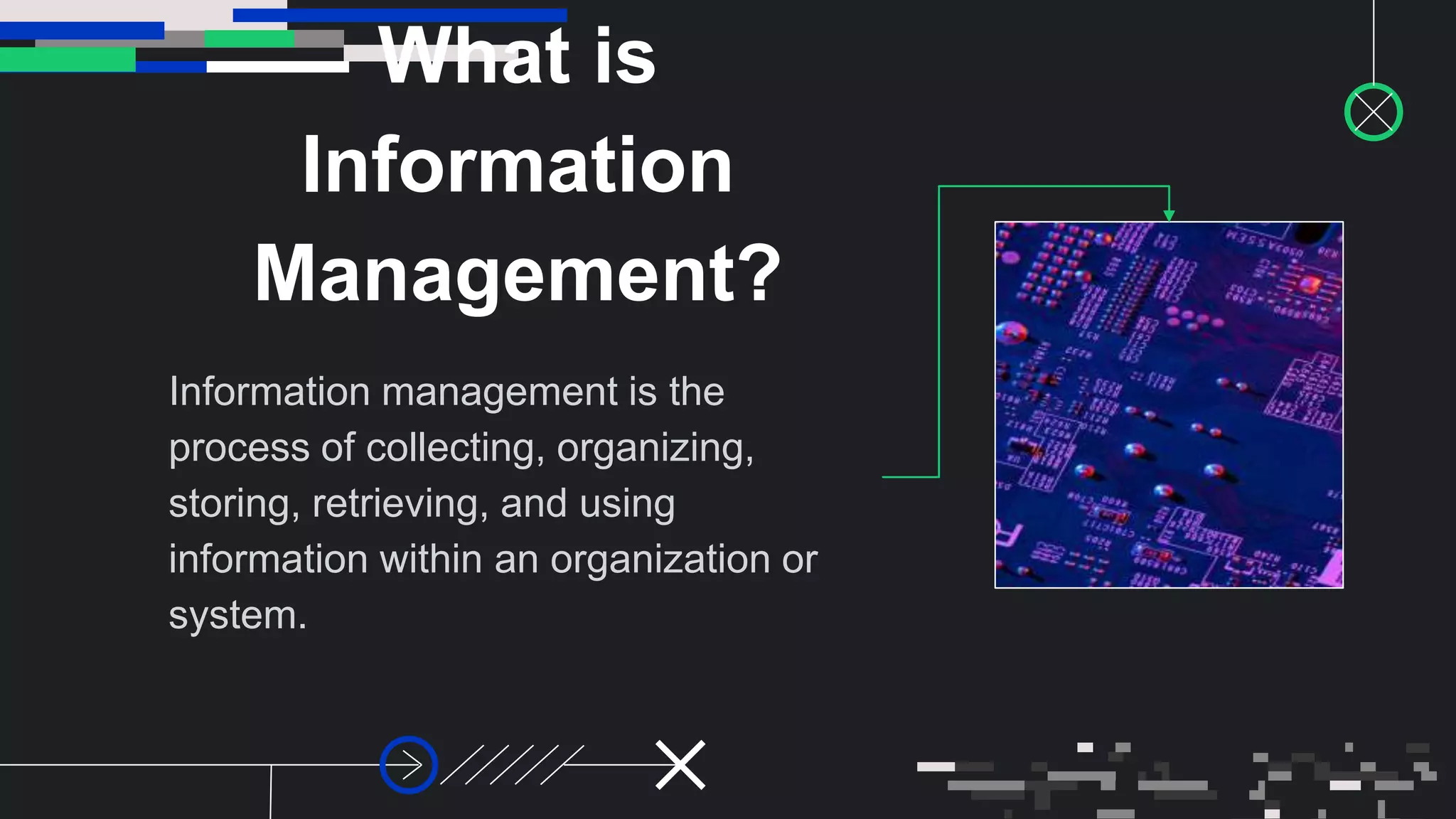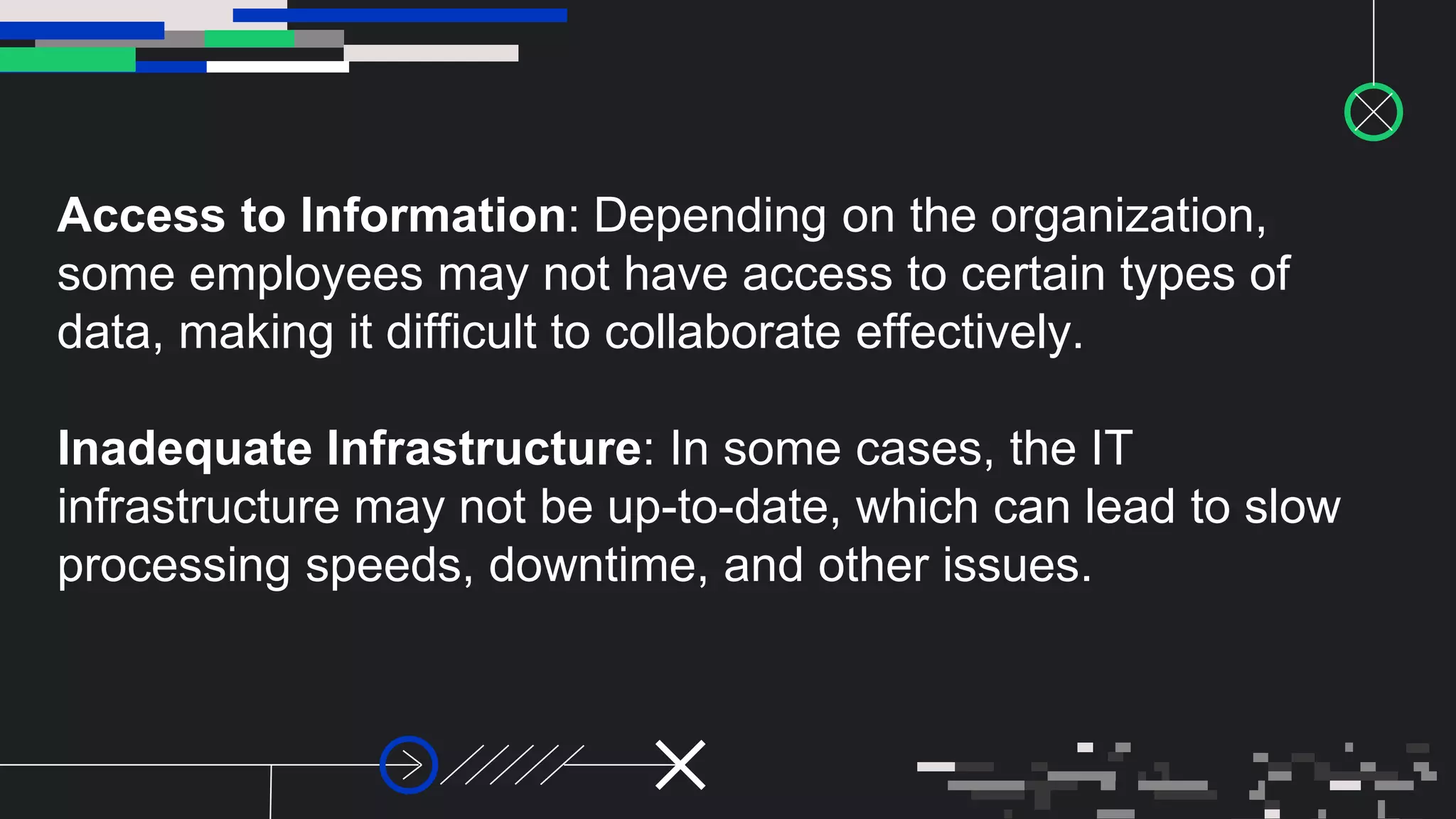This course provides an introduction to information management, covering concepts of data, information structures and management, as well as information systems, technologies, governance and security. The objectives are to define information management fundamentals, understand data concepts and principles, identify information characteristics, and apply concepts to real-world scenarios.















